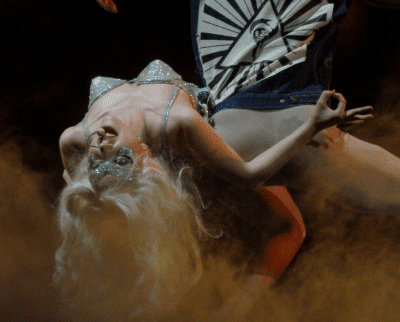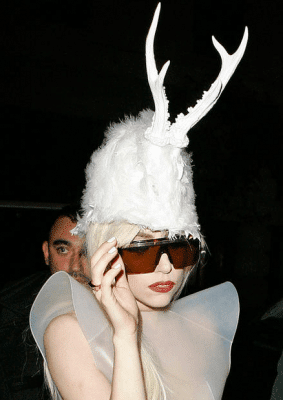Friday, November 12, 2010
2012....behind the date
What Happen in 2012 End of The World
What Happen in 2012 - The Mayans, Egyptians, Nostradamus, have all predicted that a galactic alignment will occur on December 21 2012, modern astronomers have confirmed this as fact. The Book of Revelation in the Bible also predicts that the end of the world will come, in fact the world-religions: Christianity, Judaism, Hinduism, Buddhism, and Taoism have all predicted that Doomsday will occur.
Many also believed that the year 2000 was suppose to be the end, however, nothing happened. Will December 21 2012 be a similar situation with a lot of hype and then nothing? Most likely nothing will happen?? Why are people making even more of a fuss this time around?
2012 end of the world is probably not going to be Armageddon like the media and Internet Blogs would have you believe. It's very interesting though, why all the fuss? Eventually another global catastrophe is bound to occur, but will it by chance be on December 21? I really don't think any major global catastrophe will happen around that same time frame, but we'll just have to wait and see.
The Mayans really believed that December 21 2012 would actually be more of a transition phase, pointing to a new period in time. Eventually mankind will have to change and continue to adapt naturally to the world climate. Remember change usually starts at the family level, after that the government, and after that the world. The Mayan's were a very superstitious race and they almost certainly would have believed back then that the world would eventually come to an end no later than December 21 2012. They could be way of base on their predictions;
we really don't know for certain? It could even be sooner or it may be later?
Throughout history, there have been many prophecies of the end of the world. Many which attempt to get specific end up being proven wrong by virtue of the world continuing to exist. Others haven't been proven yet one way or the other, because their dates haven't come yet. 2012 prophecies are among the latter group.
So what are these 2012 prophecies?
Basically, they all stem from one root fact: The ancient Mayan calendar ends in 2012. This fact is believed by Mayan-prophecy adherents to signal that the entire world will end at that point; that the Mayans didn't bother to make another calendar because they figured they wouldn't need one.
Specifics of this world-ending vary depending on who is interpreting the data. Some believe the world will end with a cataclysmic natural disaster, such as a meteor strike, while others who want more believability tone it down a bit and claim that it will be "the end of the world as we know it" rather than an outright destruction of the planet itself. There is a bit of interesting science thrown in, like the fact that there is projected to be an event known as a galactic eclipse on December 12th, 2012. This is only supposed to happen every 28,600 years. 2012 prophecy believers think this may herald some major changes for the Earth.
Needless to say, skeptics abound. Even though some other Mayan prophecies seem to have been accurate, these skeptics point out several logical holes in the 2012 prophecies. Among these counterpoints are simple observations like the fact that Mayan culture may have simply ended before their scholars could put together another calendar. Others say that the Mayan calendar system consisted of set periods far longer than one year, and this one just happens to end in 2012. They claim there is no special significance to this at all.
Like most nebulous prophecies, there are points and counterpoints revolving around every possibility whether for or against. The only way to know for sure, unfortunately, will be to wait until December 2012 and see what actually happens.
The "1eyes" puppet
Lady Gaga, The Illuminati Puppet
The symbolism surrounding Lady Gaga is so blatant that one might wonder if it’s all a sick joke. Illuminati symbolism is becoming so clear that analyses like this one becomes a simple exercise of pointing out the obvious. Her whole persona (whether its an act or not) is a tribute to mind control, where being vacuous, incoherent and absent minded becomes a fashionable thing.
What we must retain here is the symbolism Monarch project engendered and its use in mass media. Monarch is a type of butterfly and became the ultimate “insider’s”symbol of mind control. Symbolism surrounding Lady Gaga, in her pictures and videos, mixes those symbols with occultism of secret societies.. Her vacuous, robotic and slightly degenerate persona embodies all the “symptoms” of a mind control victim. Let’s look at what Lady Gaga represents, starting by the basics: her name

OMG! What does this crazy stuff has to do with Lady Gaga? I luv her!! ( I mean her Music!!! rara...rommma....)
Her Name
Gaga is a term that immediately refers to absent mindedness. Here are some synonyms taken from a thesaurus:
Given to lighthearted silliness: empty-headed, featherbrained, flighty, frivolous, frothy, giddy, harebrained, lighthearted, scatterbrained, silly. Slang birdbrained, dizzy.
Afflicted with or exhibiting irrationality and mental unsoundness: brainsick, crazy, daft, demented, disordered, distraught, dotty, insane, lunatic, mad, maniac, maniacal, mentally ill, moonstruck, off, touched, unbalanced, unsound, wrong.
“Gaga” is probably the easiest word to say in the English language, as it is often the first sound emitted by babies trying to imitate speech. So her name basically says: I’m a lady and I’m empty-headed. This empty head can filled with any crap you want. Imitate me young people. This state of mind is achieved after successful mind control.
Her name is also said to be inspired by Queen’s song “Radio Gaga”. The video of this song contains many scenes of the 1927 movie Metropolis. As seen in my article on Beyonce/Sasha Fierce, the motion picture tells the story of a woman from the working class that was chosen by the elite to give life to a robot, through a mix of science and Black magic.

Scene from Metropolis – Maria giving her likeness to a robot.
Is this a metaphor for mind control? Notice the inverted pentagram in the background: Black magic and Satanism.
This robot becomes a sexy and alluring performer and is given the goal to corrupt the working class. References to this movie abound in music videos, as if it was very significant for the occult elite. Madonna, Beyonce, Kylie Minogue and many others have taken the likeness of this female robot and, as you’ll see in the “Paparazzi” video, Lady Gaga also continues this “tradition”.
Her Logo

Her logo is pretty revealing and particularly fitting. Its a headless female body with a bolt of lightning going through her and exiting her genitalia. There is once again a focus on the lack of conscious thought by the singer. The body looks like the weird headless mannequins you find at clothing stores. The bolt of lightning implies that her thoughtless body has been “charged” with a force that gives it life (interesting note: trauma-based mind control is often induced using electro-shock treatments).
All-Seeing Eye Symbolism
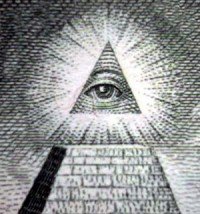
You only need to look at a couple of Lady Gaga pictures or videos to notice that she is constantly hiding one of her eyes. Most people will simply interpret this as ”a cool thing to do” or a “fashion statement”. Those who have passed the 101 of Illuminati symbolism know that the All-Seeing Eye is probably its most recognizable symbol. The gesture of hiding one eye, usually the left one, goes way back in occult orders. Here’s an explanation of the origin of the Eye of Horus.
Horus, the sun of Osiris and Isis was called ‘Horus who rules with two eyes’. His right eye was white and represented the sun: his left eye was black and represented the moon. According to the myth, Horus lost his left eye to his evil brother, Seth, who he fought to avenge Seth’s murder of Osiris. Seth tore out of the eye but lost the fight. The eye was reassembled by magic, by Thoth, the god of writing, the moon and magic. Horus presented his eye to Osiris, who experienced rebirth in the underworld.
-Dictionary of the Occult
One thing is for sure: Lady is Gaga for the All-Seeing Eye.
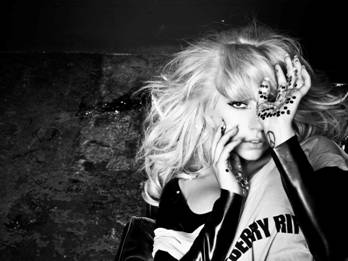 |
 |
| Teropong?..hehe |
 |
| Ape Pandang2... |
 |
| Peace!!! |
 |
| Zero...blurr like her name |
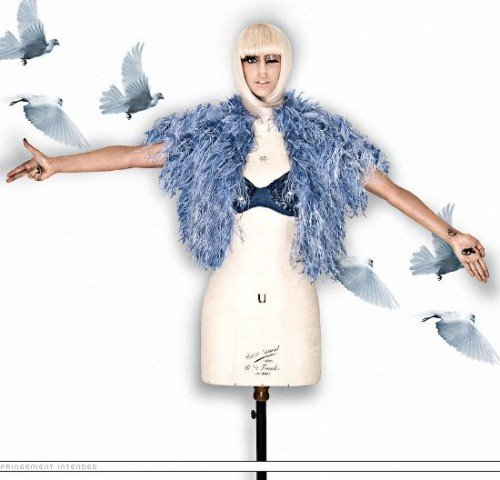
This last picture is very significant. It confirms the fact that the closed eye is used in the context of esoteric symbolism. Her left eye is in her hand, referring to the Hand of Fatima (evil eye). Also, one can’t ignore the resemblance with good ol’ Baphomet.
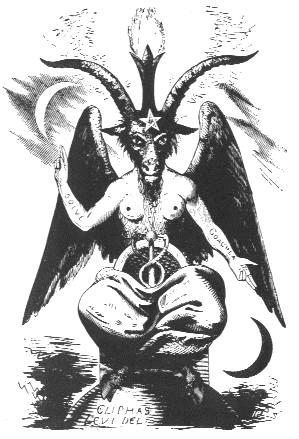
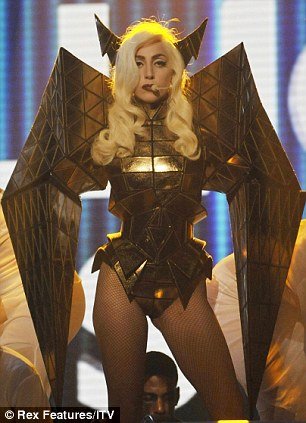
How about this ad…could there by more pyramids and eyes?
So with all this it proves gaga is just another puppet of the Freemasonry to influence people to follow the new world order. She really influence people by her music. I also like her music, its really easy listening. But apart of produce great music career she actually turn us slowly to love the concept of Freemason. So just be careful not to be influenced.
The all seeing eYes..apekah?..
WHaT Is This Symbol?.
Is it only the eyes which we often use to see something, or is it something else?....
IS It?...The Eye Of Province?...
In the modern era, the most notable depiction of the eye is on US Dollar
Symbol in US Dollar
Religious use of the Eye
Imagery of an all-seeing eye can be traced back to Egyptian methodology and the Eye of Horus. It also appears in Buddishm, where Budha is also regularly referred to as the "Eye of the World" throughout Buddhist scriptures and is represented as a trinity in the shape of a triangle known as the Tiratna, or Triple GemIn Medieval and Renaissance European iconography, the Eye (often with the addition of an enclosing triangle) was an explicit image of the Christian Trinity. Seventeenth-century depictions of the Eye of Providence sometimes show it surrounded by clouds or sun bursts.
THE TRUTH IS......
the symbol of New World Order
New World Order (conspiracy theory)
In conspiracy theory, the term New World Order or NWO refers to the emergence of a bureaucratic collectivist one-world government The common theme in conspiracy theories about a New World Order is that a secretive power elite with a globalist agenda is conspiring to eventually rule the world through an authoritarian world government — which replaces sovereign nation-states — and an all-encompassing propaganda that ideologizes its existence as the culmination of history's progress. Significant occurrences in politics and finance are speculated to be orchestrated by an unduly influential cabal operating through many front organizations. Numerous historical and current events are seen as steps in an on-going plot to achieve world domination through secret political gatherings and decision-making processes.Prior to the early 1990s, New World Order conspiracism was limited to two American countercultures, primarily the militantly anti-government right, and secondarily fundamentalist Christians concerned with end-time emergence of the Antichrist. Skeptics, such as Michael Barkun and Chip Berlet, have expressed concern that right-wing populist conspiracy theories about a New World Order have now not only been embraced by many left-wing conspiracy theorists but have seeped into popular culture, thereby inaugurating an unrivaled period of people actively preparing for apocalyptic millenarian scenarios in the United States of the late 20th and early 21st centuries. These political scientists warn that this mass hysteria may not only fuel lone-wolf terrorism but have devastating effects on American political life, such as the radical right wooing the radical left into joining a revolutionary Third Position movement capable of subverting the established political powers.
End Time
For over 2,000 years, apocalyptic millenarian Christian eschatologists have feared a globalist conspiracy as the fulfillment of prophecies about the "end time" in the Bible, specifically in thethe Book of Revelation. They assert that people who have made a deal with the Devil to gain wealth and power have become pawns in a supernatural chess game to deceive humanity into accepting an utopian world government, which rests on the spiritual foundations of a syncretic-messianic world religion, that will later reveal itself to be a dystopian world empire, which imposes the imperial cult of the Unholy Trinity — Satan, the Antichrist and the False Prophet. In many contemporary Christian conspiracy theories, the False Prophet will either be the last pope of the Catholic Church (groomed and installed by an Alta Vendita or Jesuit conspiracy) or a guru from the New Age movement or even the leader of an elite fundamentalist Christian organization like the Fellowship, while the Antichrist will either be the president of the European Union or the secretary-general of the United Nations or even a Colossus-like supercomputer.
Some of the most vocal critics of end-time conspiracy theories come from within Christianity In 1993, American historian Bruce Barron wrote a stern rebuke of apocalyptic Christian conspiracism in the Christian Research Journal, when reviewing American televangelist Robertson's 1991 book The New World Order.[ Another critique can be found in American historian Gregory S. Camp's 1997 book Selling Fear: Conspiracy Theories and End-Times Paranoia, which has been described as "impressive both as a historical and theological work". Camp warns of the "very real danger that Christians could pick up some extra spiritual baggage" by credulously embracing conspiracy theories.Progressive Christians, such as American preacher-theologian Peter J. Gomes, argue that the Bible must be read carefully to avoid misusing the text to legitimize ideological prejudices in the dominant culture.They caution conservative Christians that a "spirit of fear" can distort scripture and history by dangerously combining biblical literalism, apocalyptic timetables, demonization, and oppressive prejudices, such as sexism, homophobia, classism, xenophobia, racism, and antisemitism.They therefore call on Christians who indulge in conspiracism to repent.
More broadly, preterist Christians argue that some or all of the biblical prophecies concerning the end time refer literally or metaphorically to events which already happened in the first century after Jesus' birth. In their view, the "end time" concept refers to the end of the covenant between God and Israel, rather than the end of time, or the end of planet Earth. They argue that prophecies about the Rapture, the defiling of the Temple, the destruction of Jerusalem, the Antichrist, the Number of the Beast, the Tribulation, the Second Coming, the Last Judgment, and the resurrection of the dead were fulfilled at or about the year 70 when the Roman general (and future Emperor) Titus sacked Jerusalem and destroyed the Second Temple of Jerusalem, putting a permanent stop to the daily animal sacrifices.indicate with apparent certainty that the second coming of Christ, and the end time predicted in the Bible were to take place within the lifetimes of Jesus' disciples rather than millennia later: Matt. 10:23, Matt. 16:28, Matt. 24:34, Matt. 26:64, Rom. 13:11–12, 1 Cor. 7:29–31, 1 Cor. 10:11, Phil. 4:5, James 5:8–9, 1 Pet. 4:7, 1 Jn. 2:18. Ultimately, full Preterists argue that all Christians should reject apocalyptic eschatology and embrace realized eschatology.
Freemasonry
Anti-Masonic conspiracy theorists believe that "high-ranking" Freemasons are involved in conspiracies to create an occult New World Order. They claim that some of the Founding Fathers of the United States, such as George Washington and Benjamin Franklin, had Masonic symbolism interwoven into American society, particularly in the Great Seal of the United States, the United States one-dollar bill, the architecture of National Mall landmarks, and the streets and highways of Washington, D.C. Conspiracy theorists of the Christian right speculate that colonial American Freemasons were crypto-Luciferians who used the power of the occult to bind their planning of a government in conformity with the plan of the "Masonic God" — Lucifer worshipped as the "Supreme Being" — because of their well-meaning but misguided belief that the "Great Architect of the Universe" has tasked the United States with the eventual establishment of the "Kingdom of God on Earth" — a Masonic world theodemocracy and guild socialist economy with New Jerusalem as its capital city and the Third Temple as its holiest site — the initially utopian world government of the Antichrist.Freemasons rebut these claims of Masonic conspiracy. They assert that Freemasonry — which requires a belief in a nonsectarian God and promotes a balance between Enlightenment rationalism and Hermetic mysticism through a system of degrees of initiation and the use of sacred geometry in art and architecture — places no power in occult symbols themselves. It is not a part of Freemasonry to view the drawing of symbols, no matter how large, as an act of consolidating or controlling power. Furthermore, there is no published information establishing the Masonic membership of the men responsible for the design of the Great Seal or the street plan of Washington, D.C. The Latin phrase "novus ordo seclorum", appearing on the reverse side of the Great Seal since 1782 and on the back of the one-dollar bill since 1935, means "New Order of the Ages" and only alludes to the beginning of an era where the United States is an independent nation-state, but is often mistranslated by conspiracy theorists as "New Secular Order" or "New World Order".
Lastly, Freemasons argue that, despite the symbolic importance of the Temple of Solomon in their mythology, they have no interest in rebuilding it, especially since "it is obvious that any attempt to interfere with the present condition of things [on the Temple Mount] would in all probability bring about the greatest religious war the world has ever known".
More broadly, Freemasons assert that a long-standing rule within regular Freemasonry is a prohibition on the discussion of politics (and religion) in a Masonic Lodge and the participation of lodges or Masonic bodies in political pursuits. Freemasonry has no politics, but it teaches its members to be of high moral character and active citizens. The accusation that Freemasonry has a hidden agenda to establish a Masonic government ignores several facts. While agreeing on certain Masonic Landmarks, the many independent and sovereign Grand Lodges act as such, and do not agree on many other points of belief and practice. Also, as can be seen from a survey of famous Freemasons, individual Freemasons hold beliefs that span the spectrum of politics. The term "Masonic government" has no meaning since individual Freemasons hold many different opinions on what constitutes a good government, and Freemasonry as a body has no opinion on the topic.
Ultimately, Freemasons argue that even if it were proven that influential individuals have used and are using Masonic Lodges to engage in crypto-politics, such as was the case with the illegal Italian Lodge Propaganda Due, this would represent a cooptation of Freemasonry rather than evidence of its hidden agenda.
Illuminati
The Order of the Illuminati was an Enlightenment-age secret society founded on 1 May 1776, in Ingolstadt (Upper Bavaria), by Adam Weishaupt, who was the first lay professor of canon law at the University of Ingolstadt. The movement consisted of advocates of freethought, secularism, liberalism, republicanism and gender equality, recruited in the Masonic Lodges of Germany, who sought to teach rationalism through mystery schools. In 1785, the order was infiltrated, broken up and suppressed by the government agents of Charles Theodore, Elector of Bavaria, in his preemptive campaign to neutralize the threat of secret societies ever becoming hotbeds of conspiracies to overthrow the Bavarian monarchy and its state religion, Roman Catholicism.In the late 18th century, reactionary conspiracy theorists, such as Scottish physicist John Robison and French Jesuit priest Augustin Barruel, began speculating that the Illuminati survived their suppression and became the masterminds behind the French Revolution and the Reign of Terror. The Illuminati were accused of being subversives who were attempting to secretly orchestrate a revolutionary wave in Europe and the rest of the world in order to spread the most radical movements of the Enlightenment — anti-clericalism, anti-monarchism, and anti-patriarchalism — and create a world noocracy. During the 19th century, fear of an Illuminati conspiracy was a real concern of European ruling classes, and their oppressive reactions to this unfounded fear provoked in 1848 the very revolutions they sought to prevent.
During the interwar period of the 20th century, fascist propagandists, such as British revisionist historian Nesta Helen Webster and American socialite Edith Starr Miller, not only popularized the myth of an Illuminati conspiracy but claimed that it was a subversive secret society which serves the Jewish elites that supposedly propped up both finance capitalism and Soviet communism in order to divide and rule the world. American evangelist Gerald Burton Winrod and other conspiracy theorists within the fundamentalist Christian movement in the United States, which emerged in the 1910s as a backlash against the principles of Enlightenment secular humanism, modernism, and liberalism, became the main channel of dissemination of Illuminati conspiracy theories in America. Right-wing populists, such as members of the John Birch Society, subsequently began speculating that some collegiate fraternities (Skull and Bones), gentlemen's clubs (Bohemian Club) and think tanks (Council on Foreign Relations, Trilateral Commission) of the American upper class are front organizations of the Illuminati, which they accuse of plotting to create a New World Order through a one-world government.
Skeptics argue that evidence would suggest that the Bavarian Illuminati was nothing more than a curious historical footnote since there is no evidence that the Illuminati survived its suppression in 1785.
Traditional Malay House
The Traditional Malay house
Introduction
The traditional Malay house is one of the richest components of Malaysia’s
cultural heritage. Designed and built by the villagers themselves, it manifests
the creative and aesthetic skills of the Malays. This is a near-perfect
houseform which is appropriate to local climatic conditions and expresses the
way of life of its inhabitants.
The house is extremely well designed to suit the warm and humid
Malaysian climate and for the multifunctional use of space. Its design is also
flexible as it caters to the widely different needs of the users and it has an
addition system which allows the house to be extended to meet the growing
needs of each family.
The houseform
The traditional Malay house is a timber house raised on stilts. It is basically
a post-and-lintel structure with wooden or bamboo walls and a thatched
roof. Windows are plentiful, lining the walls and providing good ventilation
and views for the house. This quality of openness is also reflected by the large
open interior spaces with minimal partitions.
From a distance, the Malay house seems to merge naturally with the environment.
The roof, which is large, dominates the low walls and the open stilted
bottom of the house. The juxtaposition of the roofs with different sizes and at
different orientations creates an interesting visual form.
The traditional Malay house was evolved by the Malays over generations, adapting to their needs, culture and environment. It may not possess the
grandeur or ostentatiousness found in modern buildings designed by modern
self-conscious designers but it reflects other qualities lacking in the modern
buildings - a clear expression of the way of life and culture of its users.
With a direct dependence on nature for its resources and embodying a
deep knowledge of ecological balances, the house is efficiently designed to
suit the local climatic requirements using various ventilation and solar-control
devices, and low-thermal-capacity building materials. Besides being well
adapted to the environment, the house has also evolved a prefabricated building
system which is flexible and varied to suit the needs of the users. It has
also developed a very sophisticated addition system which allows the house
to be extended in line with the growing needs of the user.
Various traditional and hybrid Malay houseforms can be identified in Peninsular
Malaysia. They are classified mainly by their roof shapes. The basic
houseforms are the bumbung panjang, bumbung lima, bumbung perak and
bumbung limas.
The most common houseform is the bumbung panjang, characterised by
a long gable roof. The bumbung panjang houses are the oldest identified in
Peninsular Malaysia, many of them being over a hundred years old and still in
good condition.
The bumbung panjang is the simplest of the four houseforms. It has a
simple gable roof, supported by kingposts. The most common roofing material
used for the bumbung panjang is the attap (a thatch made from nipah and
other palm trees found in the local natural vegetation).
The simple bumbung panjang roof-form is most efficient in its ventilation
properties. Its simple funnel shape, the use of ventilation grilles at its
gable ends (tebar l a y a r )a n d the use of ventilation joints allow good ventilation
of the roof, space which cools the house effectively.
The roof is simple and easy to construct, and this partly explains the popularity
of this houseform among the poorer villagers and those who build houses
themselves. The bumbung panjang, due to its simplicity, is a very efficient
roof-form for making additions to the house.
The bumbung lima, bumbung limas and bumbungperak are all houseforms
which are not indigenous but developed through foreign influence. The
bumbung lima and bumbung perak houses are believed to have been influenced
by colonial Dutch and British houseforms.
The bumbung lima house has a hipped roof, the bumbung perak house
has a gambrel roof and the bumbung lirnas house has a pyramidal roof. Of
these three foreign houseforms used in Malay houses, the bumbung perak
houseform (also called bumbung potongan Belanda [Dutch-type] roof in the
East Coast) is the most popular.
Design and layout
Basically, the traditional Malay house can be divided into the front and
back portions which are centred around the rumah ibu (the core house) and
the dapur (kitchen) respectively.
At the entrances of most traditional Malay houses, stairs lead up to a
covered porch called the anjung. The porch acts as a good transition space
between the public and the private domains.
The anjung also acts as an important focal point for the entrance. Unfamiliar
visitors and guests are entertained here. It is also a favourite place for
the house occupants to rest, chat and watch the goings-on and passers-by in
the village.
From the entrance porch, one enters into the serambi gantung (hanging
verandah). This is the place where most guests are entertained. The low windows in the serumbi guntung allow for good ventilation and good views to the
exterior.
From the serumbi guntung, one enters into the rumuh ibu, which is the
core area. This is the largest area in the house where most activities are conducted.
Sleeping, sewing, praying, ironing, studying and even feasting (kenduri)
which is held during marriages and other festivals, all occur here. The importance
of the rumuh ibu is expressed by its floor level being the highest in the
house.
The selung is a closed walkway used to link the kitchen and the rumuh
ibu together. The side entrance to the kitchen is also located here. Besides
being a circulation space, the selang is often used by the womenfolk as a
space to chat and socialise. The selang is a very effective linking device which
leaves an open space between the two portions, allowing good ventilation and
lighting for the house.
The dupur (kitchen) is always situated at the back of the house, and is on
the lowest floor level. Modern kitchens in new Malay houses are often dropped
to the ground level where floors are cemented. Preparation of food, cooking,
eating and washing are all done here. The womenfolk also often group here to
chat.
The court space, which is peculiar only to Malay houses in Malacca, is an
intimate, private interior open space in between the rumuh ibu and the dupur.
This space is the wet core of the house where the washing, drying and toilet
areas are situated. It is often beautifully decorated with flowers and plants. It
is a favourite resting place for the users. Sometimes, informal guests, especially
ladies, are entertained here.
Climatic Design of the Malay House
The bias against wooden houses
Besides the problem of the low status of wooden houses, there are various
other reasons for the decline in popularity of wooden houses in Malaysia.
Since the traditional Malay house is largely made of wood, the reasons described
below for wooden houses will be largely applicable to traditional Malay
houses.
First, the Malaysian timber industry is heavily export-oriented. This has
affected the quality, quantity and cost of timber available for the local market.
The export-oriented timber industry has pushed up local timber prices and
since most of the high-quality timbers are exported, the local market is deprived
of high-quality hardwoods.
Secondly, restrictive, archaic and stringent building bylaws to control fires
have deterred the building of timber houses in the urban areas. The uniform
building bylaws which are based on stringent standards demand a high degree
of scientific treatment of the timber. Unless the timber used meets these requirements,
the house would be classified as a temporary dwelling.
While timber houses are considered a fire risk, it has been proven that
large timber beams actually perform better than steel or concrete in a strong
fire. Under intense heat, steel buckles and concrete crumbles, causing the
total collapse of a building. Timber, on the other hand, after initial ignition,
smoulders at a rate of around 0.6 mm per minute.
Thirdly, the discrimination against wooden structures in housing finance
and higher premiums for insurance have deterred many from building timber
houses. Insurance agents have been reported to charge 50% to 400% higher
than normal rates on insurance premiums for protection of timber buildings against fire.
Lastly, the majority of architects in Malaysia have relatively little timber
technology know-how. This gap is not likely to be filled, given the present
difficulties resulting from restrictive building bylaws and the general prejudice
against timber houses.
Vulgarisation of the Malay house
The use of the traditional Malay houseforms as mere decorative ‘cultural
symbols’ in modern architecture is another retrogressive step in the development
of the Malay house. This can be seen in the use of traditional Malay
roof-forms in the big hotels, the Penang Airport, the Bank Bumiputra headquarters
in Kuala Lumpur, other commercial and recreational buildings and
even in the little pondoks of local police bases and taxi stands. This attempt to
create a ‘Malaysian’ architecture is not only superficial but vulgar. The traditional
Malay houseform has been brought down to the most simplistic and
vulgarised form -just as a decorative piece - denying it of its deeper significance
and uses, and putting it completely out of context.
What such buildings have popularised among the Malays are in fact
pseudo-traditional houseforms which have funny-shaped and inefficient roofforms
and the inefficient use of modern materials for the traditional Malay
houses. Such pseudo-traditional Malay houses are now gaining popularity
and are accorded a high status by the villagers. Without a proper understanding
of both traditional and modem design principles, the pseudo-traditional
Malay houses become deformed with inefficient adaptations and designs.
Instead of using the traditional Malay houses as mere cultural symbols,
positive steps must be taken to promote and adapt the qualities and lift the
status of the traditional house, specifically for housing purposes.
Inappropriate use of modern materials
The use of modern materials like zinc, asbestos, cement, bricks and louvre
windows has significantly changed Malay houseforms. Zinc and asbestos
are replacing the attap roofs, creating very hot and cold interiors during the
day and night respectively, and also very noisy interiors when it rains. It also
allows the creation of complicated hybrid roofs which are difficult to be roofed
by attap. These modern roofing materials are unsuitable for the Malay house
because of their high thermal conductivity and the low roofs of the Malay
houses have no ceilings.
The use of cement and bricks has had a good impact by creating easily
maintained surfaces in the wet areas and the kitchen. But this has also significantly changed the Malay houseforms -the kitchens have been dropped from
the raised platforms on stilts to the ground level. This has created new additions
and changed the scale of the building.
Sometimes, the stilted open bottom of the house is raised and closed with
cement, bricks and louvre windows. This creates a space which is usually
used as a hall, making the Malay house a two-storey building with a very low
ground floor. Such extensions change the proportions, scale and character of
the house, creating a more solid-looking house, uncharacteristic of the traditional
house which is light and airy.
The glass louvre windows have replaced the fully openable full-length
wooden windows in many Malay houses. The louvre windows with iron bars
create a barrier which destroys the quality of openness for ventilation and
views in the traditional Malay house. The louvre windows have also closed
the bottom of the traditional full-length windows, making it less efficient in
ventilation.
Modern furniture has also cluttered up many traditional Malay houses
which have been known for their large, open and uncluttered interiors.
Introduction
The traditional Malay house is one of the richest components of Malaysia’s
cultural heritage. Designed and built by the villagers themselves, it manifests
the creative and aesthetic skills of the Malays. This is a near-perfect
houseform which is appropriate to local climatic conditions and expresses the
way of life of its inhabitants.
The house is extremely well designed to suit the warm and humid
Malaysian climate and for the multifunctional use of space. Its design is also
flexible as it caters to the widely different needs of the users and it has an
addition system which allows the house to be extended to meet the growing
needs of each family.
The houseform
The traditional Malay house is a timber house raised on stilts. It is basically
a post-and-lintel structure with wooden or bamboo walls and a thatched
roof. Windows are plentiful, lining the walls and providing good ventilation
and views for the house. This quality of openness is also reflected by the large
open interior spaces with minimal partitions.
From a distance, the Malay house seems to merge naturally with the environment.
The roof, which is large, dominates the low walls and the open stilted
bottom of the house. The juxtaposition of the roofs with different sizes and at
different orientations creates an interesting visual form.
The traditional Malay house was evolved by the Malays over generations, adapting to their needs, culture and environment. It may not possess the
grandeur or ostentatiousness found in modern buildings designed by modern
self-conscious designers but it reflects other qualities lacking in the modern
buildings - a clear expression of the way of life and culture of its users.
With a direct dependence on nature for its resources and embodying a
deep knowledge of ecological balances, the house is efficiently designed to
suit the local climatic requirements using various ventilation and solar-control
devices, and low-thermal-capacity building materials. Besides being well
adapted to the environment, the house has also evolved a prefabricated building
system which is flexible and varied to suit the needs of the users. It has
also developed a very sophisticated addition system which allows the house
to be extended in line with the growing needs of the user.
Various traditional and hybrid Malay houseforms can be identified in Peninsular
Malaysia. They are classified mainly by their roof shapes. The basic
houseforms are the bumbung panjang, bumbung lima, bumbung perak and
bumbung limas.
The most common houseform is the bumbung panjang, characterised by
a long gable roof. The bumbung panjang houses are the oldest identified in
Peninsular Malaysia, many of them being over a hundred years old and still in
good condition.
The bumbung panjang is the simplest of the four houseforms. It has a
simple gable roof, supported by kingposts. The most common roofing material
used for the bumbung panjang is the attap (a thatch made from nipah and
other palm trees found in the local natural vegetation).
The simple bumbung panjang roof-form is most efficient in its ventilation
properties. Its simple funnel shape, the use of ventilation grilles at its
gable ends (tebar l a y a r )a n d the use of ventilation joints allow good ventilation
of the roof, space which cools the house effectively.
The roof is simple and easy to construct, and this partly explains the popularity
of this houseform among the poorer villagers and those who build houses
themselves. The bumbung panjang, due to its simplicity, is a very efficient
roof-form for making additions to the house.
The bumbung lima, bumbung limas and bumbungperak are all houseforms
which are not indigenous but developed through foreign influence. The
bumbung lima and bumbung perak houses are believed to have been influenced
by colonial Dutch and British houseforms.
The bumbung lima house has a hipped roof, the bumbung perak house
has a gambrel roof and the bumbung lirnas house has a pyramidal roof. Of
these three foreign houseforms used in Malay houses, the bumbung perak
houseform (also called bumbung potongan Belanda [Dutch-type] roof in the
East Coast) is the most popular.
Design and layout
Basically, the traditional Malay house can be divided into the front and
back portions which are centred around the rumah ibu (the core house) and
the dapur (kitchen) respectively.
At the entrances of most traditional Malay houses, stairs lead up to a
covered porch called the anjung. The porch acts as a good transition space
between the public and the private domains.
The anjung also acts as an important focal point for the entrance. Unfamiliar
visitors and guests are entertained here. It is also a favourite place for
the house occupants to rest, chat and watch the goings-on and passers-by in
the village.
From the entrance porch, one enters into the serambi gantung (hanging
verandah). This is the place where most guests are entertained. The low windows in the serumbi guntung allow for good ventilation and good views to the
exterior.
From the serumbi guntung, one enters into the rumuh ibu, which is the
core area. This is the largest area in the house where most activities are conducted.
Sleeping, sewing, praying, ironing, studying and even feasting (kenduri)
which is held during marriages and other festivals, all occur here. The importance
of the rumuh ibu is expressed by its floor level being the highest in the
house.
The selung is a closed walkway used to link the kitchen and the rumuh
ibu together. The side entrance to the kitchen is also located here. Besides
being a circulation space, the selang is often used by the womenfolk as a
space to chat and socialise. The selang is a very effective linking device which
leaves an open space between the two portions, allowing good ventilation and
lighting for the house.
The dupur (kitchen) is always situated at the back of the house, and is on
the lowest floor level. Modern kitchens in new Malay houses are often dropped
to the ground level where floors are cemented. Preparation of food, cooking,
eating and washing are all done here. The womenfolk also often group here to
chat.
The court space, which is peculiar only to Malay houses in Malacca, is an
intimate, private interior open space in between the rumuh ibu and the dupur.
This space is the wet core of the house where the washing, drying and toilet
areas are situated. It is often beautifully decorated with flowers and plants. It
is a favourite resting place for the users. Sometimes, informal guests, especially
ladies, are entertained here.
Climatic Design of the Malay House
The bias against wooden houses
Besides the problem of the low status of wooden houses, there are various
other reasons for the decline in popularity of wooden houses in Malaysia.
Since the traditional Malay house is largely made of wood, the reasons described
below for wooden houses will be largely applicable to traditional Malay
houses.
First, the Malaysian timber industry is heavily export-oriented. This has
affected the quality, quantity and cost of timber available for the local market.
The export-oriented timber industry has pushed up local timber prices and
since most of the high-quality timbers are exported, the local market is deprived
of high-quality hardwoods.
Secondly, restrictive, archaic and stringent building bylaws to control fires
have deterred the building of timber houses in the urban areas. The uniform
building bylaws which are based on stringent standards demand a high degree
of scientific treatment of the timber. Unless the timber used meets these requirements,
the house would be classified as a temporary dwelling.
While timber houses are considered a fire risk, it has been proven that
large timber beams actually perform better than steel or concrete in a strong
fire. Under intense heat, steel buckles and concrete crumbles, causing the
total collapse of a building. Timber, on the other hand, after initial ignition,
smoulders at a rate of around 0.6 mm per minute.
Thirdly, the discrimination against wooden structures in housing finance
and higher premiums for insurance have deterred many from building timber
houses. Insurance agents have been reported to charge 50% to 400% higher
than normal rates on insurance premiums for protection of timber buildings against fire.
Lastly, the majority of architects in Malaysia have relatively little timber
technology know-how. This gap is not likely to be filled, given the present
difficulties resulting from restrictive building bylaws and the general prejudice
against timber houses.
Vulgarisation of the Malay house
The use of the traditional Malay houseforms as mere decorative ‘cultural
symbols’ in modern architecture is another retrogressive step in the development
of the Malay house. This can be seen in the use of traditional Malay
roof-forms in the big hotels, the Penang Airport, the Bank Bumiputra headquarters
in Kuala Lumpur, other commercial and recreational buildings and
even in the little pondoks of local police bases and taxi stands. This attempt to
create a ‘Malaysian’ architecture is not only superficial but vulgar. The traditional
Malay houseform has been brought down to the most simplistic and
vulgarised form -just as a decorative piece - denying it of its deeper significance
and uses, and putting it completely out of context.
What such buildings have popularised among the Malays are in fact
pseudo-traditional houseforms which have funny-shaped and inefficient roofforms
and the inefficient use of modern materials for the traditional Malay
houses. Such pseudo-traditional Malay houses are now gaining popularity
and are accorded a high status by the villagers. Without a proper understanding
of both traditional and modem design principles, the pseudo-traditional
Malay houses become deformed with inefficient adaptations and designs.
Instead of using the traditional Malay houses as mere cultural symbols,
positive steps must be taken to promote and adapt the qualities and lift the
status of the traditional house, specifically for housing purposes.
Inappropriate use of modern materials
The use of modern materials like zinc, asbestos, cement, bricks and louvre
windows has significantly changed Malay houseforms. Zinc and asbestos
are replacing the attap roofs, creating very hot and cold interiors during the
day and night respectively, and also very noisy interiors when it rains. It also
allows the creation of complicated hybrid roofs which are difficult to be roofed
by attap. These modern roofing materials are unsuitable for the Malay house
because of their high thermal conductivity and the low roofs of the Malay
houses have no ceilings.
The use of cement and bricks has had a good impact by creating easily
maintained surfaces in the wet areas and the kitchen. But this has also significantly changed the Malay houseforms -the kitchens have been dropped from
the raised platforms on stilts to the ground level. This has created new additions
and changed the scale of the building.
Sometimes, the stilted open bottom of the house is raised and closed with
cement, bricks and louvre windows. This creates a space which is usually
used as a hall, making the Malay house a two-storey building with a very low
ground floor. Such extensions change the proportions, scale and character of
the house, creating a more solid-looking house, uncharacteristic of the traditional
house which is light and airy.
The glass louvre windows have replaced the fully openable full-length
wooden windows in many Malay houses. The louvre windows with iron bars
create a barrier which destroys the quality of openness for ventilation and
views in the traditional Malay house. The louvre windows have also closed
the bottom of the traditional full-length windows, making it less efficient in
ventilation.
Modern furniture has also cluttered up many traditional Malay houses
which have been known for their large, open and uncluttered interiors.
rumah limas johor
Malacca Traditional House
Negeri Sembilan Traditional House
Kedah Traditional House
Another Malacca Traditional House
Malay Architecture
Introduction
Malay architecture was basically at first very simple and minimalistic to accommodate their families as they have very simple tools and also very low economy at that point of time.
Malays also at that time were also very prone to the natural disasters, wars, the expansion of their own families and also the finding of a source of food and economy for the Malays which was ever changing. Thus the only purpose of the houses was to protect themselves from the rain and sun and also to be easily movable when there was a need to.
But later, there was a great development in their construction to suit their ever changing lifestyles and needs. There were also many new more useful and complex tools that was invented to built more stable, bigger and more beautiful houses. Thus many new styles and shape of the architecture was born, which can clearly be seen in Malay States such as Malaysia, Indonesia and Brunei.
Early Malay Architecture
Early Malay architecture was very influenced and diversified due to its two divisions in the Malay community which is the Pro-Malays and the Deutro-Malays.The Deutro-Malays lived further inland thus limiting their contact with other people as many chose to travel by sea at that time. The Pro-Malays lived at the seaside thus being exposed to foreign influence as many came to explore the lands.
This caused a great gap between the Pro-Malays and the Deutro-Malays as the Pro-Malays were getting more and more modern, leaving the Deutro-Malays behind with several thousands years less of technology.
This Megalithic culture of the Pro-Malays and the Deutro-Malays caused many inventions of architecture being framed by Animism. They had prayed to their ancestors who had died for respect and also for their "protection" under the care of their ancestors.
Factors Influencing Malay Architecture
Climate
The climate greatly affects the shape of the architecture of the Malays. The high temperature and also heavy rain greatly shapes the designing and the building of the houses. This had caused many Malay houses to have balconies and verandahs with the floor high above the ground. They also have greatly sloping roofs, as a result of heavy rain flowing easily to the ground.
The greatly sloping roof would help in the flowing of the rain water as when heavy rain occurs. If the roofs were parallel to the ground, the roofs would not be able to withstand the immense pressure of the rainfall, thus causing the roof to easily break as it is usually made of leaves and wood. The sloping roofs decreases the pressure of the rainfall letting the water flow to the ground.
The balconies and the verandahs are for the relaxation of the Malays as the internal parts of the house would be so much hotter in a sunny day. They are able to enjoy the air and the coolness outside rather than inside.
The elevated floor would help to keep the water out due to heavy rain and also not allow any small animals to go into the house such as snakes and rats.
Religion
Malay houses and architecture are also greatly influenced by their religion.A Malay house would be built to be orientated with their direction of their prayers as they must pray facing towards the Mecca in Saudi Arabia. They had strictly obeyed their religion and had many distinct features to show that they were Muslims.
They was also a division between the sleeping quarters of the men and the ladies.
There are also many engravings on the wooden walls and windows in Arabic of their beliefs and their religion which is Islam.
The Future of Malay Architecture
In many different parts of the world, there have been many different forms in the different Malay States due to their different lifestyles, slightly different climate and also different economies. But all the houses had two things in common and that was to have a sloping roof and was being elevated from the ground.Thus the art of the Malay architecture was clearly distinct to their economy and their religion. But now, many are not interested in reviving the art of Malay architecture due to modernization thus we should try to preserve some of these priceless heritage before they are gone.
Monday, October 18, 2010
testing page
architecture fullstop....why did i created this title?..
Subscribe to:
Posts (Atom)


